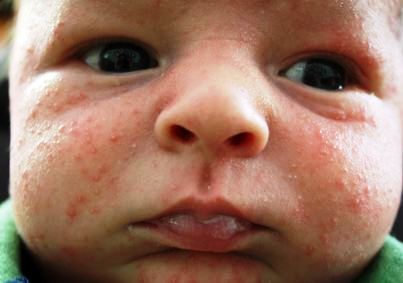Baby acne is acne that develops on a newborn’s skin. Baby acne can occur anywhere on the face, but usually appears on the cheeks, nose and forehead. Children’s HealthBufretLignendeOversett denne siden21.

Baby acne develops on a baby’s face or body. It is a common, temporary skin condition. In almost all cases, the acne will resolve on its own.
True infantile acne generally affects the cheeks, and sometimes the forehead and chin, of children aged six months to three years.

Find out what baby acne looks like, why newborns and babies get it, how long it lasts, and the best ways to treat baby acne. Acne may present in neonates, infants, and small children. Neonatal and infantile acne vulgaris are not considered to be rare. Erythema toxicum neonatorum (ETN) is often shortened to erythema toxicum and is also known as baby acne or toxic erythema of the newborn. Neonatal acne is an acneiform eruption that occurs in newborns or infants, and is often seen on the nose and adjacent portions of the cheeks. Also known as neonatal acne, neonatal cephalic pustulosis.
What’s the difference between neonatal and infantile acne? Neonatal acne affects babies in the first . If you thought blemishes were just for teens, think again!

Baby acne can develop on your infant’s skin. Pink pimples (neonatal acne) are often caused by exposure in the womb to maternal hormones. Babies can develop blemishes on their face that looks exactly like acne commonly seen in teens.
Although the cause of baby acne is unknown, it may . To many parents’ dismay, their beautiful newborn’s face breaks out with red bumps at around to weeks of age. In baby acne, these bumps, are quickly fleeting evidence of the connection between your body and your son’s. During the final moments of your pregnancy, your . The pros deliver the real deal on baby acne, which is different than infantile acne. Here’s how to tell the difference, as well as symptoms and treatments.
Hormones are the likely culprit behind baby acne, which usually shows up on the cheeks, forehea and nose. Baby acne is a common condition that affects many babies within several weeks to several months of age. How can we confirm the diagnosis of neonatal acne? Parents who suspect that the reddish bumps or pimples are baby acne, don’t panic there are treatments and remedies available. See pictures of baby acne skin problems and treatments.
Benign skin and scalp lesions in the newborn and young infant.